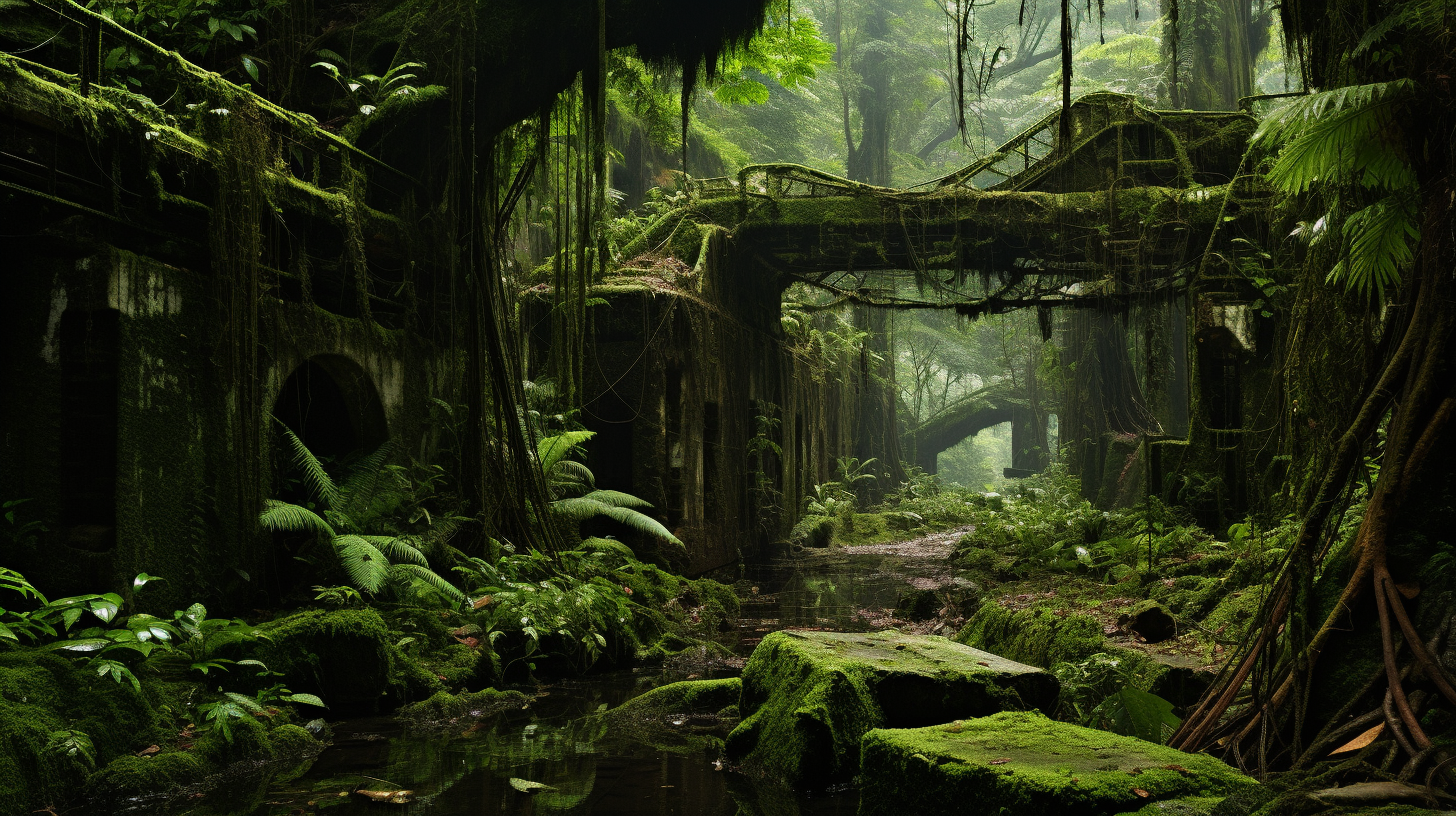In the shadows of what once were towering bastions of biodiversity, we find ourselves walking through the ghostly echoes of emerald realms. The rainforests, Earth’s erstwhile lungs, now heave with the burden of silence, their verdant choruses replaced by the whispering winds of memory. In our series, we take the next step into the once-lush netherworld, to Remember the Rainforests; not merely as vestiges of the past, but as haunting lessons for the present.
It seems like only yesterday when the cacophony of life played nature’s symphony under the dense canopy. The Toucans with their bulbous rainbows beaks, the stealthy Jaguars that prowled the thick underbrush, and the Morpho butterflies that danced in iridescent blues – they were once the heartbeats of robust ecosystems. Now, the stillness of the understory only amplifies the absence of their exuberance.
As storytellers of this green dystopia, we have chronicled the demise. From ‘The Fading Pulse of Earth’s Lungs‘ to ‘Gone with the Trees: Silence in the Deforested Lands‘, we’ve laid bare the stark realities. Our journey continues as scholars foretell that even the resilient anacondas and the keen-eyed harpy eagles are faltering under the domino effect initiated by deforestation and climate change.
‘Life – the most ingenious artist of all‘ so aptly mused Rachel Carson. Yet, life’s canvas has darkened, smudged by the soot of wildfires and stripped of its once intricate details. We explore how indigenous tribes, such as the Yanomami and the Kayapo, who once thrived in harmony with the rainforests, now cling to the tattered fringes of their cultural tapestry.
Moreover, we delve into the crucial roles forests play beyond biodiversity. Rainforests have been guardians of our climate, moderators of atmospheric rivers, and sanctuaries for discoveries. A single tree, much like a stone thrown into a pond, sent ripples through the ecosystem, affecting everything from carbon storage to hydric cycles. But what happens when that stone can no longer pierce the surface of our ecological pool?
The forlorn vestiges of these forests are not just a testament to nature’s loss but reflective of our societal myopia. We have traded irreplaceable jewels for the transient glitter of unbridled consumption. In the article ‘Canopies of Silence: The Disquieting Future of Rainforests’, published just a week prior, we questioned if the damage could be reversed. Today, we are prompted to ask – what remains to be saved?
Chronicling the sordid aftermath of our actions, scientists murmur of ’empty forest effect’ where flora survives but fauna vanishes. Our narrative paints in stark hues the dissonance between the thriving underworld of insects and fungi and the conspicuous absence of larger mammals and birds. The bells toll for every lost species, an elegy for the rich tapestries that no longer hang in nature’s endless gallery.
Are these emissaries of Earth’s former glory, the kapok trees still stretching for the sky, the resilient mangroves at the water’s edge but a mirage of hope? Or perhaps they stand as solemn monuments to a time when humanity had the chance to change its course but faltered.
As we pen these lines, in the hearts of our readers might flicker the desire to avert such destitution. It’s a sentiment as futile as seeking dew in a desert, for the dystopian world we chronicle is immutably etched in the annals of time. In these reflections, lies not the roadmap for resurrection, but the sobering lesson for a society teetering on the brink of its own emerald echo.
